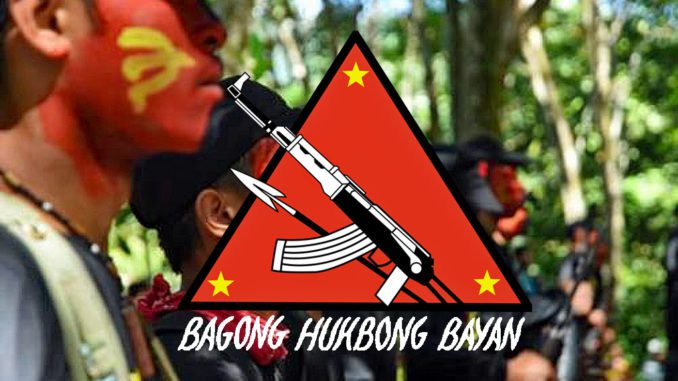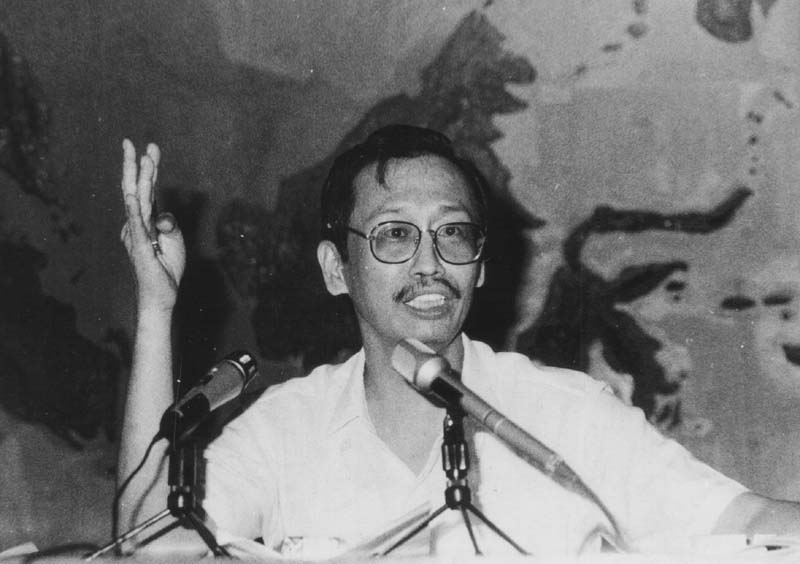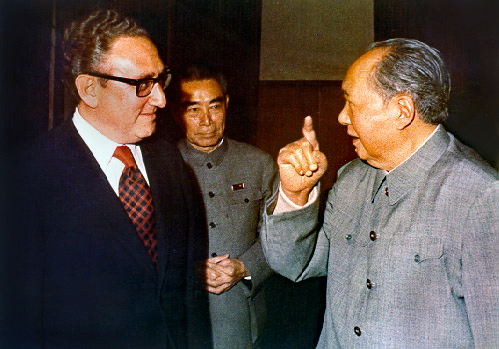
To say the Philippines has been the host to several armed conflicts is a massive understatement. For as long as the nation has existed, it has been engaged in conflicts with various groups pushing their respective ideologies, while others essentially engage in the activities of bandits and terrorists.
There is not much information about such conflicts, especially among the international community. However, the Philippines’ Communist Rebellion could be considered as one of Asia’s longer insurgencies.
The insurgency started in 1969, with the creation of the New People’s Army (NPA), the armed wing of the Communist Party of the Philippines (CPP). It is still active today and has organised various attacks throughout the country, leaving a trail of casualties along the way.
The movement, at times, has succeeded in weakening the Philippine government. Government forces have been unable to control some areas of the country in which the communist rebellion has become deeply ingrained.
Not only that, with more than 50 years of conflict, the government, and the succession of six presidents are still unable to come to peace terms with the rebels. With little information about this insurgency, the different roles and actors involved, it could be hard to get objective information on the subject.
To form an opinion and get some facts, it is essential to understand the aims and some key phases of this rebellion to construct a clear picture of today’s Philippines Government and its political situation.
To make things easier, here is an essential guide on everything you need to know about this long-lasting rebellion.

When did everything start? The role of Joma Sison in the NPA
In the late 1960s, the CPP decided to establish an armed wing to overthrow the government through guerilla warfare, to reach the goal of creating a new government with middle-class members at the top and no foreign intervention.
Jose Maria Sison, known as Joma Sison was the head of the armed insurgency and his writings are the most detailed in documenting the activity of guerrilla warfare. The New People’s Army rapidly grew during the first years of the revolution.
The country was, in fact, impoverished and led by many incapable leaders. That’s why many Filipinos welcomed warmly the ideals of the insurgency quite promptly. Many went on to join the army as volunteers.
The success of the NPA resulted in the fact that the CPP did analyze the circumstances of many of the Filipino people at the time and found the basic problems in bureaucrat capitalism, feudalism, and imperialism. By offering a different government and promising another type of government, the values and ideals of the CCP were particularly appealing to many.
The first act of insurgency took place in 1971 when NPA militants threw grenades during a Liberal Party Rally in the capital, Manila.
The act killed 9 people and injured 95 others. It was the beginning of a long struggle. Since then, the NPA has been involved in killings, kidnapping and various bombings throughout the country. It is estimated that the communist rebellion has caused the death of about 40,000 people, both fighters and civilians.
In 1972 the country was declared to be under Martial Law by President Ferdinand Marcos.
During those years, the NPA was opposing the regime and experienced its biggest expansions. It also received help from the Chinese government who provided support up until 1976, the NPA actually began distancing themselves from China after the country underwent market reforms, the NPA didn’t see the country as being true “Maoists”.
The rebellious were able to support their operations through extortion and funds from the collection of “revolutionary taxes” as well as many foreign support campaigns. The so-called revolutionary taxes refer to taxes paid by businesses that are forced by the rebels to pay to avoid being attacked.
It was in 1973 that the National Democratic Front of the Philippines was formed to serve the organisation and represent the communist groups in politics.
Today, the leader, poet, writer, and politician Joma Sison is on a voluntary exile in the Netherlands together with other senior figures who are directing the Communist party and its operations from abroad.
The idea of the CPP is to establish a new democratic state in the country that would be led by the local working class and freed from the US influence that is still present in the Philippines today’s politics. The group itself has been inspired by the armed struggle developed in China after the Maoist movement.

The Splitting of the New People’s Army
It was during the 1980s when thousands of volunteers joined the rebellion. The repressive government of Marcos fell and was replaced by Cory Aquino’s administration.
However, during this period, the organisation split into two different factions by 1992: one led by Maoist principles and with Joma Sison as its leader, seeking a reconciliation with the system; while the other faction supported the need for larger military units and believed in continuing the armed struggle as the only means to gain power.
This weakened the guerilla group, that was hit by several battles, surrenders, and failed attacks. Slowly but effectively, the rebellious group regained its strength, with the emergence of the more “moderate” faction as the winning one.
Even though during the years, the government has tried to weaken and control the organisation, it has yet been able to destroy it. Today, the NPA is considered a terrorist organisation and a threat to the safety of the country.
Attempts to Crush The Rebellion
President Rodrigo Duterte has claimed that he will end the rebellion, no matter the means. Such a promise was made by numerous leaders of the country before him and never kept.
Gloria Arroyo promised to fight and to crush the group in 3 years, but at the end of her mandate, the guerilla fighters were far from being overthrown, and she ended up in jail with the accusation of stealing goods using force in time of civil disorder.
So far, the Communist Party of the Philippines has survived through one dictatorship and five presidents but has never politically controlled any region, province nor city. The rebellion’s base consists of remote forests and mountains scattered around the country.
Today the rebellion seems to show signs of decline, with a dramatic reduction in army members, from more than 20,000 to the current 4,000. However, it remains a serious threat to the country. Even if the situation is often neglected by the international community, the Filipino people are directly affected by the conflict.
The Island Of Samar
Since the start of the rebellion, the strongest base of the NPA wing is considered to be Samar, a small island hosting 2% of the total country’s population and 5% of Philippines’s territory. The majority of the attacks do take place on the island, which is a mountainous region, perfect for hiding and for organising the guerilla warfare.
Indeed, one of the most relevant factors that helped the spread of the rebellion was the landlessness.
As millions of Philippine farmers did not own their land. In Samar, less than 40 clans controlled half of the island’s land, and the working class in that area was more willing to accept the measures proposed by the NPA.
Additionally, the Island is historically very important to the cause as it was the one part of the country that most strongly opposed the American Commonwealth, the ruling of Spain and the occupation by Japan.
What About Peace?
The truth is that during the past 30 years, 6 Philippines presidents have attempted to negotiate for peace. With more than 40 rounds of talks, discussions about peace are still unclear, and no agreement has been able to keep the peace and to maintain a durable cease-fire.
President Duterte has tried to establish peace through a series of measures, from highly aggressive ones to peace negotiations and actions aimed at building trust. For example, he appointed some sympathisers of the rebellion to his cabinet and released some of the highest-ranking rebels imprisoned.
These actions resulted in the release of police officers hold as hostages by the rebels. However, nothing led to a general ceasefire yet. Peace negotiations ended in 2017, as the rebels accused Duterte to use the drug was as a pretext to imprison rebels and to “capriciously change his mind” too frequently on the issue of reaching a deal.
Duterte failed in releasing the political prisoners that were promised liberation which made the rebels withdraw from peace talks that were carried out in Norway in 2016 coming to a unilateral ceasefire.
Today, the situation of the NPA’s rebellion is uncertain. The National Democratic Front is expecting several concessions in exchange for a ceasefire, which the government does not seem ready to accept. As for today, it seems that an agreement for peace is far from being close to signing.
No matter where you stand, it is important to know the details of this long-lasting rebellion, which has been overlooked for too long by many. With so many years of guerilla fighting and so many people from the Philippines is directly or indirectly involved, the issue should be handled to ensure the country’s safety.
Click here to read more about the vibrant history of the Philippines.


I had the misfortune of being involved in an organization, Friends of the Congo. I heard about the Congo Crisis and Rwanda’s complicity for the first time and wanted to show solidarity. I had no intention of being a communist. Climate activism has no interest for me. I see it as a virtue signaling scam with globalist agendas. I now wake up and realize that I had funded a communist organization. They turned on Tshisekedi and spread fake news about him. Yole Africa is to the DRC what NPA is to the Philippines: they occupy remote places, set up fake groups in places like Goma, and cause riots. They probably eat Pygmies. They own the actual conflict mines. They are adventurers. The Congo even calls them “sorciers”, which translates to Wicca. They defended Katumbi.
I thought they were with Tshisekedi but they joined the fake news and called him a dictator. Last time I checked, Patrice Lumumba’s son Francois supports Tshisekedi.
The way that communists alienated Duterte is like watching the Soviets sabotage mutual friendship and cooperation with Lumumba and causing him to run to the CIA. The sabotage is from the left now.
Friends of the Congo had a Zoom meeting on the Philippines in which they were spreading the fake news about the Lumad, and I did not know what to make of it. I come from the right, and I am horrified at the CIA’s assassinations. Duterte himself started out as one of those leaders who vaguely resemble the left and which Dulles gaslighted. But now the assassination plots are coming from the left. Communism is a western ideology where all the fake human rights began, and climate is one of their scams. What you call the west is what we call the left. Fuck Joe Biden.